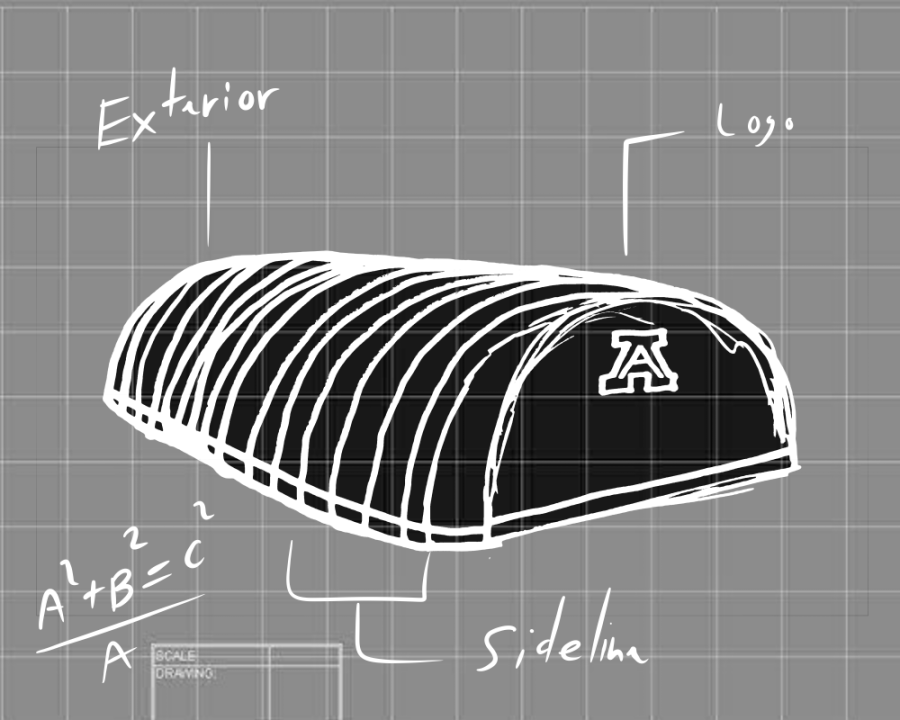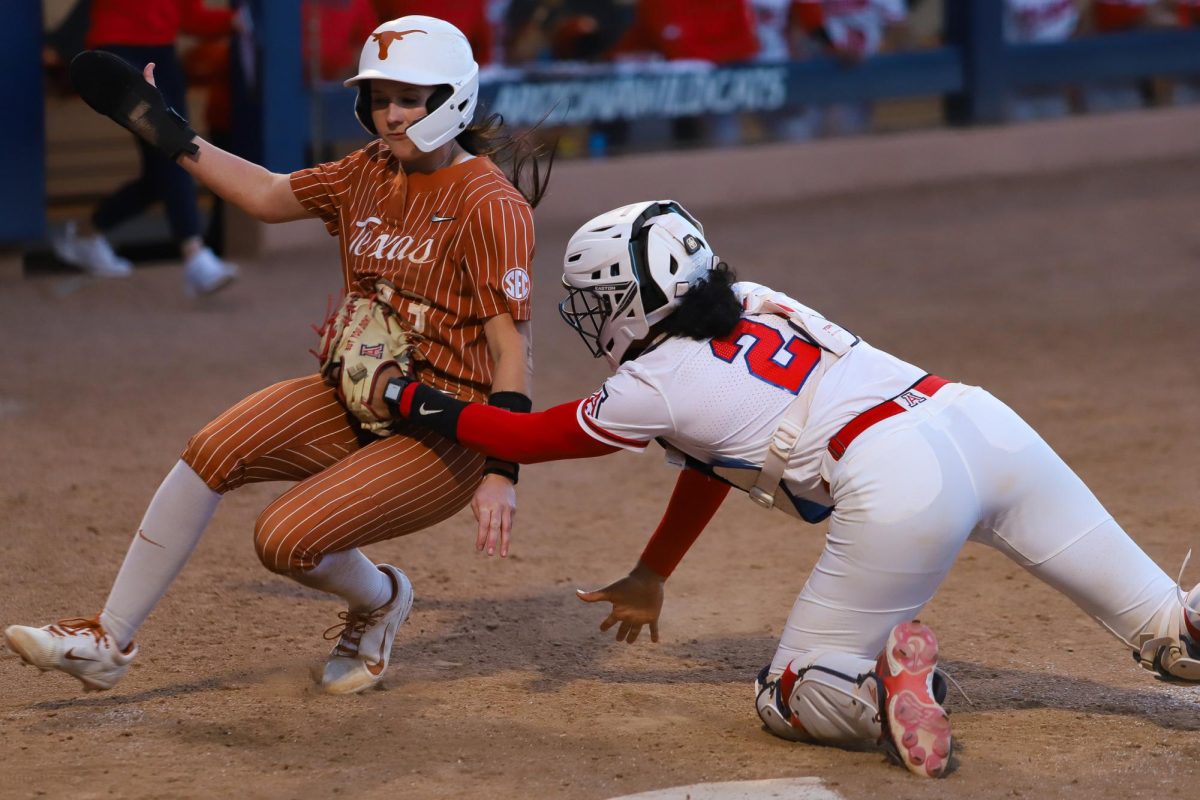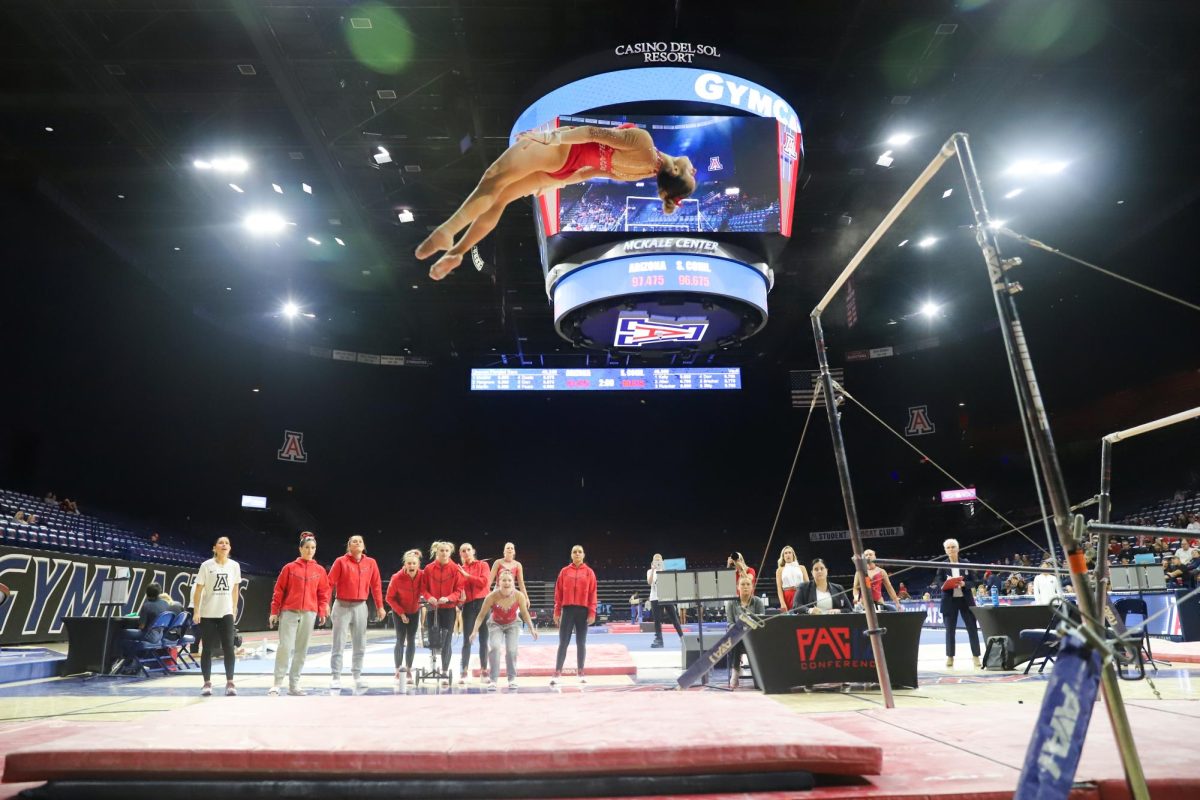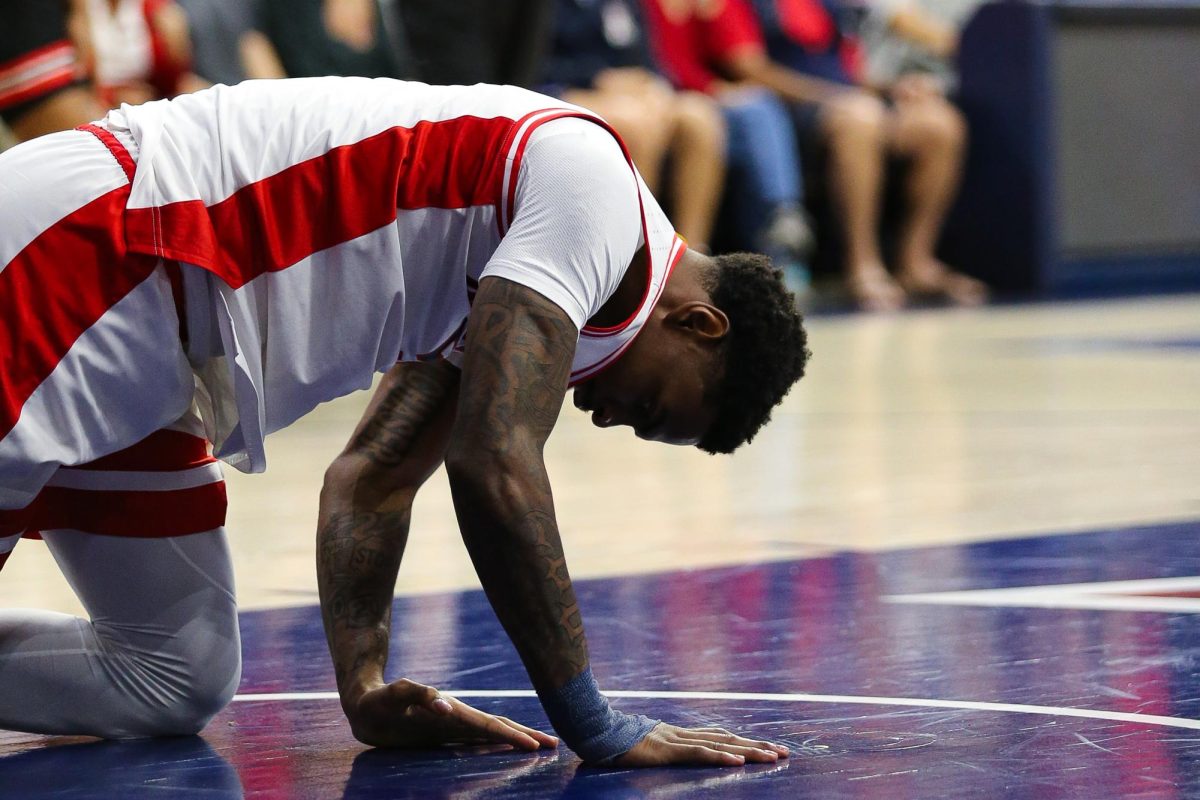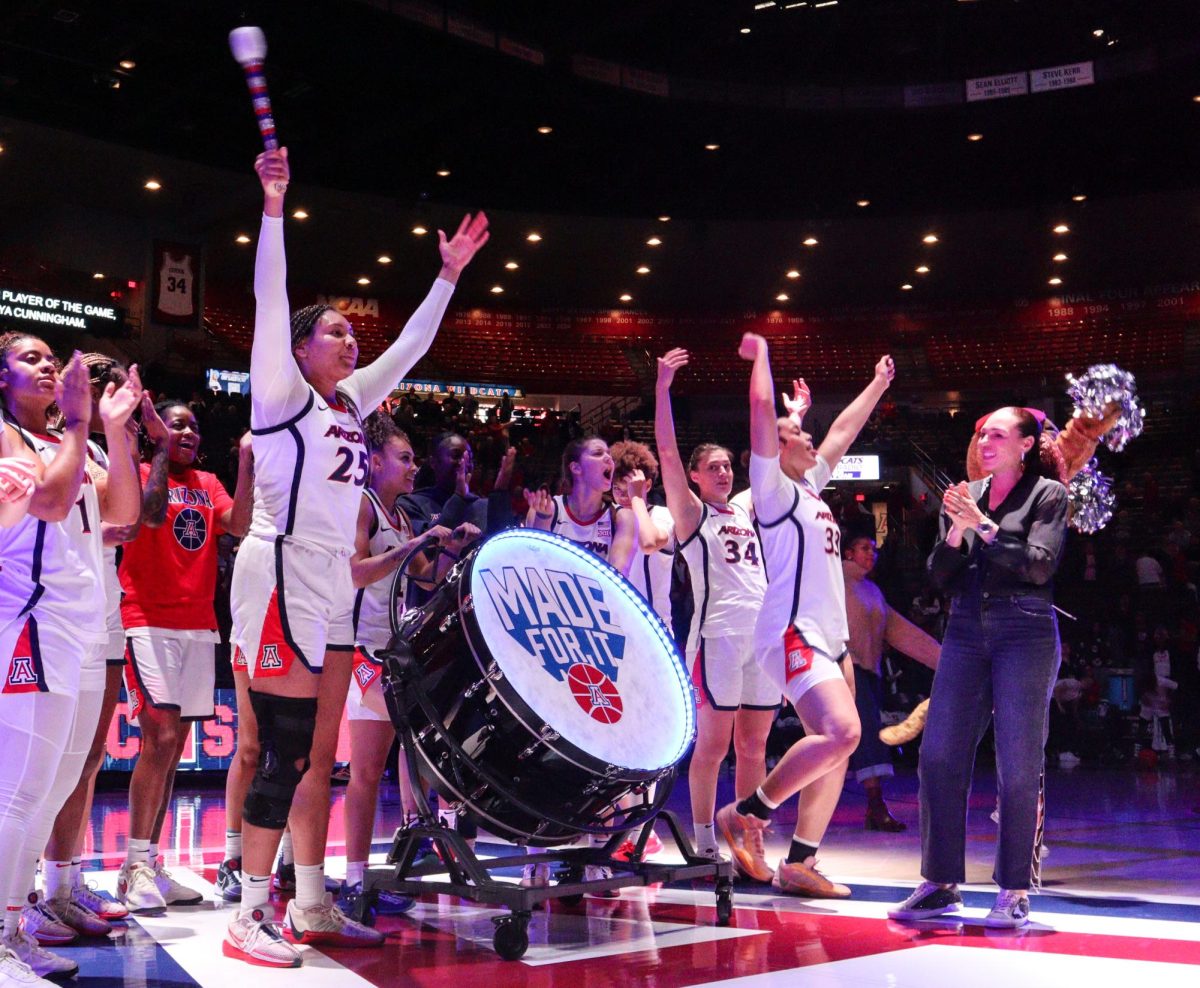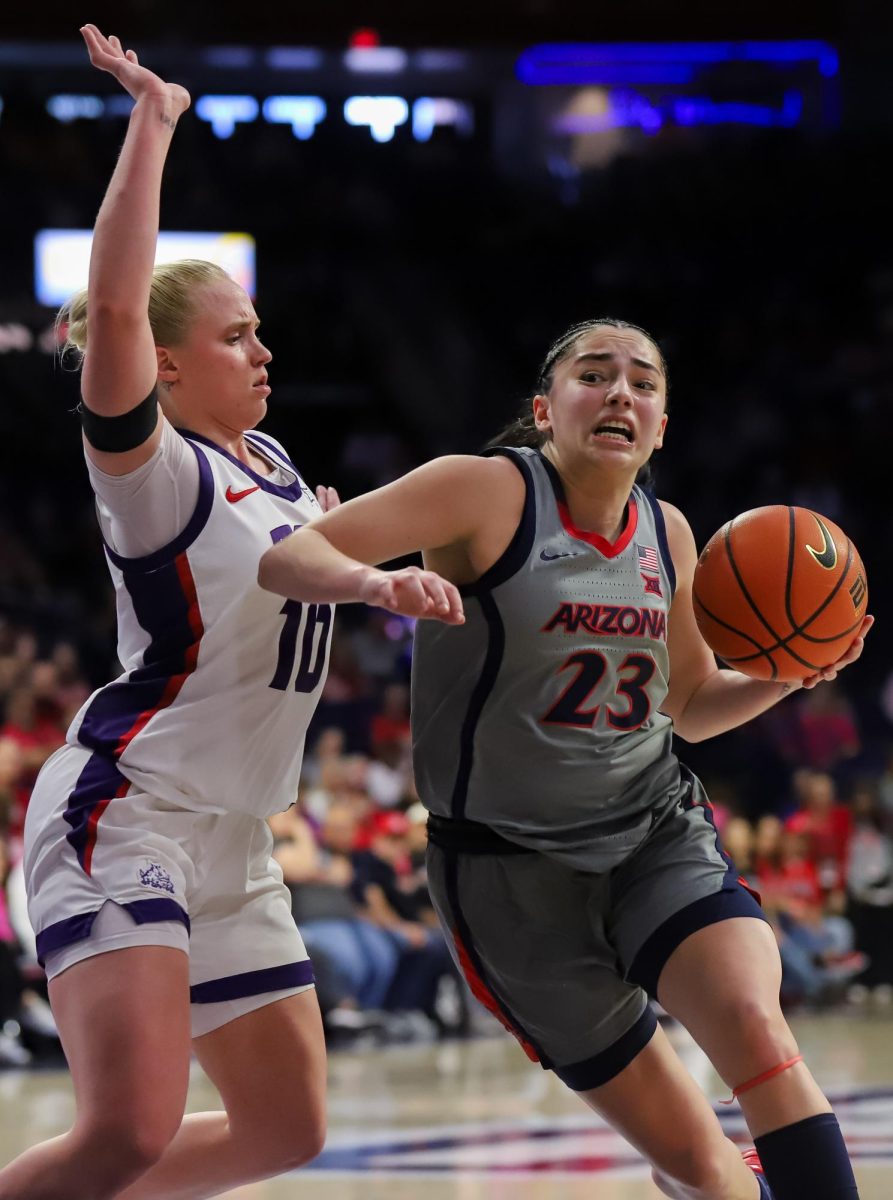College football is a constant arms race; you need the best athletes, the best record and the best facilities in order to compete on the highest level.
In 2007, the UA spent $72.3 million on the Lowell-Stevens Football Facility, according to the UA planning, design and construction website. The state of the art complex is home to weight rooms, training and recovery rooms, film rooms for every position group, offices for the coaching staff and the press conference room.
These improvements were necessary for the UA to be able to compete for high-profile recruits.
Even with the vast number of improvements Arizona had made over the years, there is still room for more improvement especially when compared to the rest of the Pac-12 Conference. Particularly because Arizona does not have an indoor practice facility like many of the premier programs across the country do.
In 2013, the University of Oregon unveiled their Sports Performance Center which houses team video theaters, a coaching conference suite, video editing center, dining hall and weight room. The impressive six-floor structure came with a $68 million price tag.
These facilities cannot only benefit the football program, but can be a plus for the entire athletic department.
The University of Auburn’s indoor facility allows the football team, baseball team, softball, soccer and track team to practice year round.
In-state rival ASU completed construction in 2008 on Verde Dickey Dome, their indoor practice facility, which includes 103,500 square feet of indoor space.
The need for an indoor practice facility in Tucson is not only necessary for recruiting reasons, but it is practical because of when football camp starts.
Arizona’s football preseason camp begins in early August, which is also when monsoon season begins. This time of year is also the hottest part of the year. This means practices can be canceled or changed because of inclement weather and lighting, or they are rescheduled due to the heat and the safety of players.
“We had to scramble to get out of the lighting, which is unpredictable weather here in Tucson”, head coach Rich Rodriguez said after practice on August 6.
The heat is not only a factor when it comes to player’s health, but it can affect performance during practice, which is something Rodriguez has seen.
“Nate Alvarez looked pretty good today, but he had some snaps today go little high probably got tired it’s warm but he a tough guy and will keep getting better,” Rodriguez said.
Even with all of the positives there could be a detractor to the team and their performance. For years, Arizona’s football program has prided itself on the ability to work in the heat conditions Arizona presents.
Teams outside of Arizona have little to no experience playing in the type of heat the UA is accustomed to practicing in. It is an advantage they enjoy and this team is no different.
“Coach tries to build on that, being able to compete especially in this heat,” sophomore quarterback Brandon Dawkins said. “ASU and us are the only teams that get this kind of heat. We love that we get to come out here and get that kind of edge”.
According to athleticbusiness.com, the average indoor practice facility cost $14.7 million. That is a large price tag for any program across the country, but if you want to compete at the highest level, you must spend the money to do so.
Nothing is confirmed for the UA on the prospects of an indoor practice facility. However, with all of the recent investing in the program, a new facility is not too far fetched.
Follow Fernando Galvan on Twitter.



